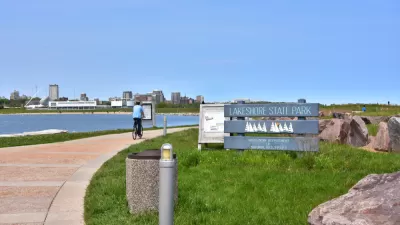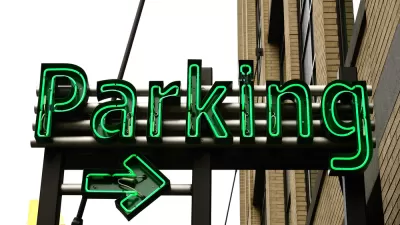A new study released on Friday, coinciding with National Bike to Work Day, finds that bicyclists in the United States save at least $4.6 billion a year by riding instead of driving, reports Tanya Mohn.
With the dramatic rise in bicycling commuters over the past decade (40%) and the outsized percentage of household budgets spent on transportation (more than food or healthcare), the economic benefits of bicycling announced last week by the League of American Bicyclists, Sierra Club, and the National Council of La Raza are destined to raise a few eyebrows.
According to Mohn, "The average annual operating cost of a bicycle is $308, compared to $8,220 for the average car, and if American
drivers replaced just one four-mile car trip with a bike each week for
the entire year, it would save more than two billion gallons of gas, for
a total savings of $7.3 billion a year, based on $4 a gallon for gas."
"Making it easier and safer for people to walk or bicycle 'is a matter of fairness,' Transportation Secretary Ray LaHood
wrote on his blog Fast Lane on Friday...LaHood noted that walking and bicycling are options people want,
citing a national poll released by Princeton Survey Research Associates International
in March that indicated that 'more than 80 percent of Americans support
maintaining or increasing federal funding for biking and walking.' 'The
benefits of bicycling are real, and there's no arguing with the
impressive ridership data,' LaHood said. 'Bicycling is an important part of the 21st century transportation mix.'"
FULL STORY: Pedaling to Prosperity: Biking Saves U.S. Riders Billions A Year

Planetizen Federal Action Tracker
A weekly monitor of how Trump’s orders and actions are impacting planners and planning in America.

Map: Where Senate Republicans Want to Sell Your Public Lands
For public land advocates, the Senate Republicans’ proposal to sell millions of acres of public land in the West is “the biggest fight of their careers.”

Restaurant Patios Were a Pandemic Win — Why Were They so Hard to Keep?
Social distancing requirements and changes in travel patterns prompted cities to pilot new uses for street and sidewalk space. Then it got complicated.

Platform Pilsner: Vancouver Transit Agency Releases... a Beer?
TransLink will receive a portion of every sale of the four-pack.

Toronto Weighs Cheaper Transit, Parking Hikes for Major Events
Special event rates would take effect during large festivals, sports games and concerts to ‘discourage driving, manage congestion and free up space for transit.”

Berlin to Consider Car-Free Zone Larger Than Manhattan
The area bound by the 22-mile Ringbahn would still allow 12 uses of a private automobile per year per person, and several other exemptions.
Urban Design for Planners 1: Software Tools
This six-course series explores essential urban design concepts using open source software and equips planners with the tools they need to participate fully in the urban design process.
Planning for Universal Design
Learn the tools for implementing Universal Design in planning regulations.
Heyer Gruel & Associates PA
JM Goldson LLC
Custer County Colorado
City of Camden Redevelopment Agency
City of Astoria
Transportation Research & Education Center (TREC) at Portland State University
Camden Redevelopment Agency
City of Claremont
Municipality of Princeton (NJ)





























